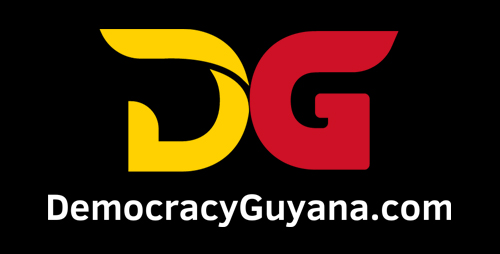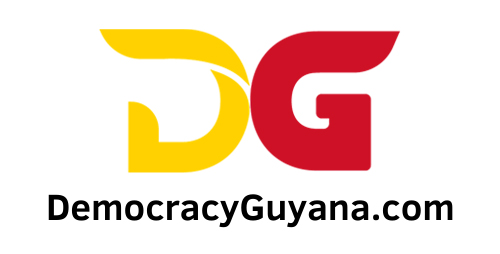Background: Cost of Living (COL) Interventions. Combating rising cost of living, an established global issue following the COVID-19 pandemic, which disrupted global supply chains, and compounded by the Russia/Ukraine war; requires a two-fold approach. First, it requires immediate relief measures to cushion the impact aimed at increasing disposable income. Second, while in the case of Guyana rising cost of living is driven, in part, by the external factors globally as previously mentioned, it is also attributed to strong demand for goods and services given the increased level of production in the oil and gas sector, coupled with the aggressive national development agenda vigorously pursued by the Government. As such, rising costs, which is driven by buoyant aggregate demand in the economy, necessitates investments and making incentives available to bolster the supply side (increased production cost effectively) of goods and services. This, in turn, would help to drive down prices to equilibrium levels in the medium to long term.
Countries with highest inflation rates since the pandemic as at end of 2022
Zimbabwe – 314.5% (2023 est. 193%)
Venezuela – 360% (2023 est. 187%)
Lebanon – 171% (2023 est.?)
Sudan – 257% (2023 est. 139%)
Argentina – 122% (2023 est. 72%)
Turkey – 51% (2023 est. 72%)
Suriname – 53% (2023 est. 52%)
Islamic Republic of Iran – 47% (2023 est. 46%)
Sri Lanka – 45% (2023 est. 29%)
Ethiopia – 29% (2023 est. 34%)
Ghana – 43% (2023 est. 32%)
Yemen – 15% (2023 est. 30%)
Moldova – 13% (2023 est. 29%)
Angola – 13% (2023 est. 21%)
Estonia – 10% (2023 est. 19%)
The Global average inflation rate was 8.7% (2022), estimated to slow to 5.3% in 2023. Guyana’s inflation rate remained in the low single digit range, which is projected to slow below 5% in 2023, thus remaining below the global average. In 2022, many other countries were still experiencing double digit inflation. The World Economic Forum reported that inflation rates have doubled in 35 of 44 advanced countries over the past two years.
Government of Guyana Immediate Relief Measures included the following: Through the PPP/C 2020 budget, the immediate reversal of over 200 punitive taxes and fees (VAT included) implemented by the APNU Government during their tenure in 2015-2019, which had increased the tax burden on the population by over $60 billion in additional taxes annually. This was equivalent to a tax-burden per household of an additional $300,000 annually, thereby eroding the household disposal income. Consequently, the reversal of these tax measures immediately restored $300,000 per household annually in disposable income.
Other measures included
- Reducing the excise tax on fuel from 50% to 0% ($20-40 billion annually in foregone revenue),
- Budgetary provision for COL intervention ($5 billion),
- Absorbed increased electricity generation cost by GPL (effectively subsidizing electricity cost: $17-20 billion annually),
- Absorbed increased cost by GWI (effectively subsidizing water: $2-4 billion annually),
- Part time job programme ($10 billion annually),
- Increase income tax threshold ($5-10 billion),
- Education subvention and grants: restoration of and increasing the cash grants for school children ($15 billion annually),
- Extending the freight charges adjustment to the pre-pandemic formula ($6-12 billion annually in foregone revenue),
- Public assistance ($1 billion annually),
- Increased old age pension ($365 million more annually),
- Increased public sector wages and salaries ($33 billion increase for the period 2020- 2023 or an average of $11 billion more annually), and
- Subsidy for first-time low-income homeowners,
The sum total of immediate relief measures including foregone revenue to the treasury, amounts to an estimated $189 billion annually, representing 19% of non-oil GDP (2022), 6.45% of overall GDP (2022), 24% of the national budget (2023), and 63% of the NRF Balance as at the end of 2022. Altogether, this translates to an additional $945,000 [indirectly] in disposable income per household annually.
Affordable Housing for Low Income Families: The Low-Income Housing Programme. The increase in the low-income mortgage ceiling is essentially to cater for low to moderate income families. In so doing, low income families can now access up to $20 million at lower interest rates. More importantly, the low-income housing programme by the Government is designed as a major poverty reduction tool. As such, low-income families are able to own their own home at a cost below the market price for financing, which in turn empowers those families, add to their net worth and is a key pillar upon which they are lifted out of poverty. For example, they can then leverage the value to raise capital to build micro enterprises and enhance their overall wellbeing over time. If the Government did not make this arrangement with the banks for low-cost financing, low-income families would not have been able to afford their own home if they were subject to borrowing at market rates.
Key Facts about the Government’s Housing Programme
- The Low-Income Mortgage Program was introduced about sixteen (16) years ago under former President Bharrat Jagdeo (Now Vice President), with a maximum ceiling of $8 million.
- The average interest rate (below the average lending rate of about 10%-16%) is 25%. This low interest rate which in turn enabled access to affordable financing for new low- income families was made possible through an arrangement brokered between the Government and the banks whereby the Government waived the taxes payable on the interest earned on home loans.
- The maximum repayment period is 30
- The equity homeowners / borrowers are required to inject is about 10%-20%.
Additionally, there is a Mortgage Interest Relief (MIR) program implemented by the PPP/C Government whereby eligible applicants (first time homeowners and the principal amount borrowed must not exceed $30 million), such persons shall be allowed a deduction of interest paid on housing mortgage loans from their chargeable income. The average annual interest paid on an $8 million loan would work out to about $262k and in the case of a $20 million loan would work out to $655k.
The total loans and advances to households including home loans, education, travel, personal and others at the household level, stood at $16 billion in 2007, which increased to $40 billion or by $24 billion in 2023, representing an increase of 153% from where it stood 16 years ago. This is indicative of steady growth attributable to the fact that the low-income home ownership programme is most effective, such that low-income families can afford to borrow and access loans to own their own homes at below market rates.
Long Term Investment in the Economy to Improve National Competitiveness. For the period 2020-2023, the Government invested approximately $800 billion or an average of $267 billion annually aimed at increasing the national productive output and improving national competitiveness in the economy. These are investments in transforming, for example, the energy landscape (the gas-to-energy project), developments in the infrastructure sector, the economic services sector, and regional development.
Direct and Indirect Benefits Achievable through these investments include, for example, Gas-to-Energy Project:
- Halving electricity cost, translating to increased disposable income, lower production cost for the manufacturing sector, thereby transferring approximately $20 billion into household savings annually,
- Annual savings in foreign exchange of an estimated US$300 million,
- Enable structural transformation from a predominantly primary producing economy to more of a tertiary producing economy by way of greater national competitiveness,
- Overall, the estimated direct and indirect benefits of $200 billion
Key Benefits: Investment in Road and Bridge Infrastructure
- Improved efficiency (efficient transportation and logistics, movement of goods and people),
- Reduction in transportation and logistics costs on all levels, household, commercial and industrial,
- Improved connectivity and accessibility,
- Boost to local businesses,
- Opening up of new opportunities, access to additional / new resources, such as land,
- Real estate value appreciation,
- Long term cost savings





